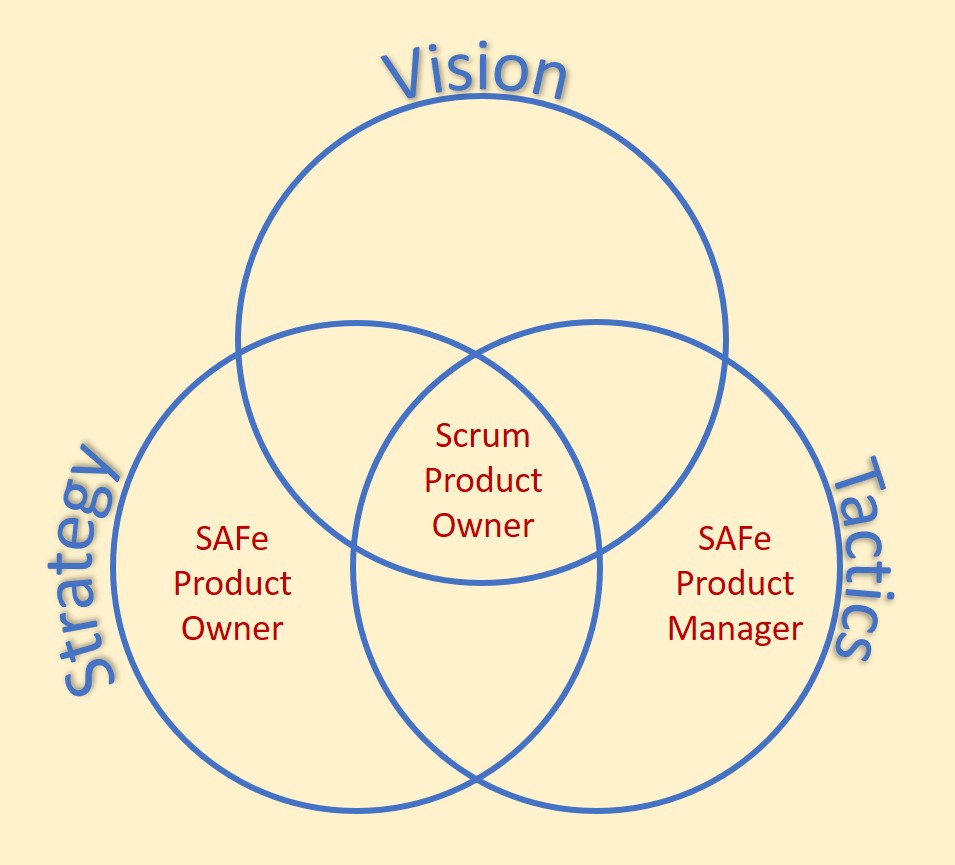- Setting up Auditing & Logging of Files/Objects Using Native Windows File Server Tools - 16th October 2020
- Designing Key Performance Indicators (KPI) - 15th July 2020
- DDOS Attacks and Website Hacking - 6th July 2020
Differences in Product Ownership
How product ownership roles can differ and can be more effectively applied
Over the 20 or so years of Scrum becoming more widely used in organisations, product ownership has often become a term encompassing the following types of role:
- Product Owner as defined in the original Scrum framework. The person who owns a product in it’s entirety.
- A feature owner who manages a major function of an overall product (or service) with which users interact – for e.g. payments on a retail website.
- A component owner who manages a distinct part of the design of an underlying platform, such as an API layer. It may not directly be end user facing, but it plays a critical part in the overall solution.
- A platform owner who manages a platform – a collection of shared assets (could be infrastructure, software or both) – that are used by other development teams upon which to build other products (such as AWS, which offers a platform upon which other products / services can be built)
- A SAFe (Scaled Agile Framework) product owner who owns the product details
- A portfolio owner who managed a group of inter-reltated products.
Some of the roles above can be combined. For example, a person can be a portfolio owner and at the same time and also manage one of the products within the portfolio – although care will have to be given in this situation to ensure there is no biased product decisions.
Each of the roles above is a product management role. None is better or worse than the other. However, the ownership scope of each is different and so the skills required to for the role are also slightly different. It is also worth noting that there is also a distinct overlap between the skills such that people in each role can effectively move into the other roles and meet the objectives successfully.
Scrum Product Owner
As the name implied, this is the person in charge of the product! This person is not a product backlog manager or a project manager etc. This person is the one who is responsible for setting the vision of the product, it’s objectives, and maximising the value customers (and the business) achieve from the product.
Before we continue, it is key here to differentiate between a feature of the product and the entirety of the product. For e.g. person shopping on an online grocery retailer is using the website of the retailer. If the person saves their shopping list to return to it another time, then that is a feature of the website. The website is the overall product whereas the shopping list being saved is a feature of that product.
In my opinion, the better way to manage products and ownership and to maximise value is for the product owner to own the product in its entirety — like the website in the example — and not just a product part or feature — such saving shopping lists. Referring to people as product owners who do not manage a product and do not exercise the right ownership is wrong because it creates confusion and it sets wrong expectations of what is achievable by that function.
Someone who owns a product feature cannot take on the responsibility of delivering an improvement of the overall product’s value and improving product success. Additionally, that person does not have the required decision-making authority.
A product like a large retail website is, of course, probably too big to be managed by a single individual. In complex enterprises, it requires several product people to collaborate. But even in this case, my opinion is that there should only be one product owner who is ultimately responsible for the product. The other product people involved should have roles whose names correctly reflect their scope of ownership, as discussed below.
Platform Owner
A software platform is a collection of software and hardware that underlies several products and is used by those product’s development teams to build their products on. A platform owner, therefore, owns such a platform.
The individual is responsible for maximising the value the platform creates, for example, reducing time-to-market of the products built on top of it or reducing development cost. A platform owner is thus a type of product owner as they are someone whose product is a platform.
These types of roles usually require some in-depth technical expertise to communicate with the users of the product as these users are usually technical resources such as developers. When a platform grows, it may be necessary to share product ownership and introduce feature and/or component owners.
SAFe Product Owner
The agile scaling framework SAFe has it’s own SAFe product owner role. The SAFe and Scrum product owner roles, despite a similar name, have differences. Whereas a Scrum product owner owns a product in its entirety, a SAFe product owner looks after the product details, defines user stories, works on a subset of the product backlog, and interacts with the one or more development teams.
The SAFe model, strictly speaking, splits product ownership into two distinct roles: The SAFe product manager owns the strategic product decisions, and the SAFe product owner owns the tactics for implementing product strategy user stories and product backlogs. The Scrum product owner, however exercises full product ownership in it’s entirely, from vision to tactics, as shown below.

Comparison of roles and responsibilities between Scrum Product Owner, SAFe Product Owner and SAFe Product Manager
While using a strategic and tactical product role is a common occurrence, I believe it is better to do this once the product is stable as compared to when it is in the in the early growth stage of it’s product life cycle. This is because in the growth stage, there is a significant amount of uncertainty and change that affects the product strategy. At this stage it is important to combine strategic and tactical product decision-making together to determine the optimum method to launch the product, achieve product-market fit, and then keep the product growing. I believe that it is harder to combine tactical and strategic decision-making when they are split across two distinct roles.
In contrast, a Scrum product owner is always involved in the tactical work, even though the bulk of that work may be done by feature and component owners in collaboration with the dev teams.
Portfolio Owner
A portfolio owner looks after a group of products, and the role is sometimes known as product portfolio manager. An example of a product portfolio is Microsoft Office. It consists of products such as Word, PowerPoint, and Excel.
The job of a portfolio owner is to maximise the value a product portfolio creates. This includes actively managing the portfolio, collaborating with the product owners who look after the products within the portfolio, harmonising the individual product strategies and product roadmaps, aligning major releases, managing dependencies, and helping create a common user experience across the various products.
The individual will typically benefit from having solid product management skills and from having successfully managed individual products before stepping into the role. For a smaller product portfolio, the head of product might be able to take on the role. Otherwise, a dedicated full-time portfolio owner will be required.
Related posts:
Z Tech Blog
Z Tech is a technologist, senior programme director, business change lead and Agile methodology specialist. He is a former solutions architect, software engineer, infrastructure engineer and cyber security manager. He writes here in his spare time about technology, tech driven business change, how best to adopt Agile practices and cyber security.
